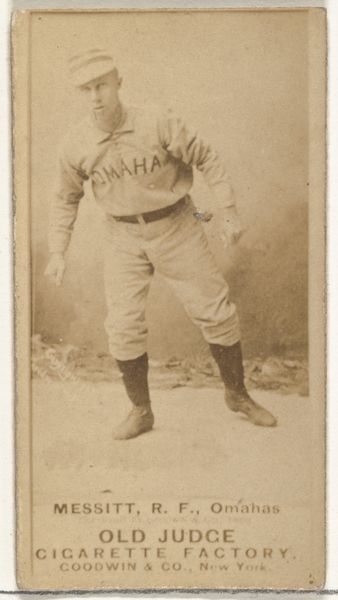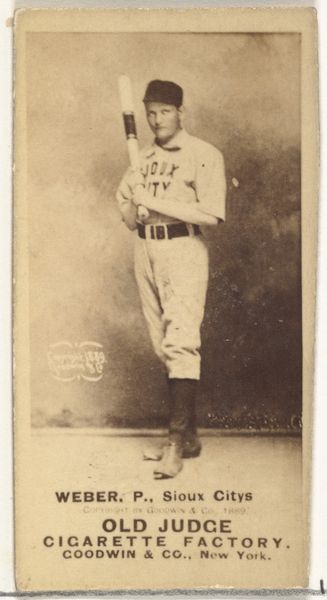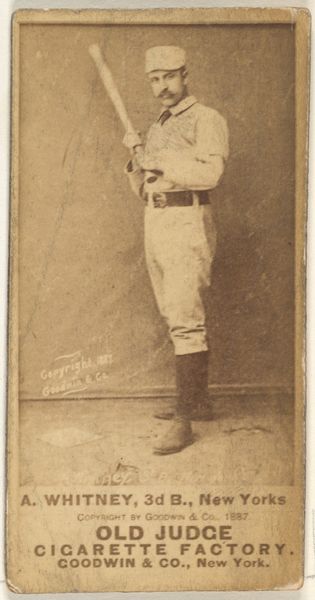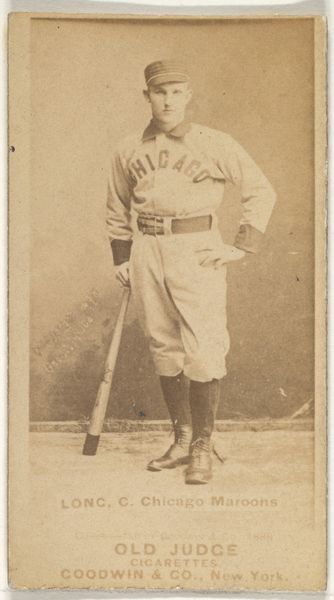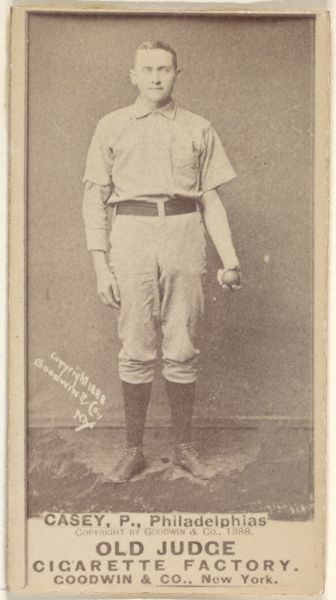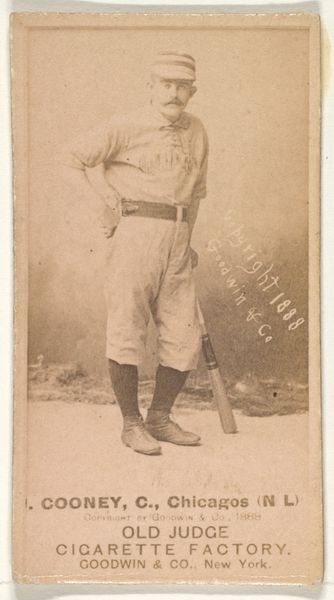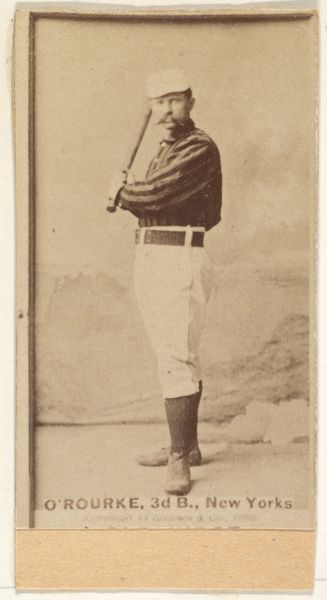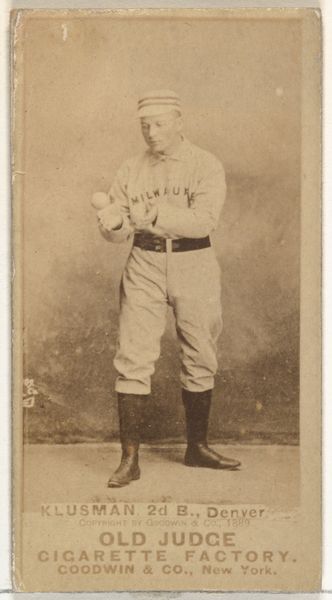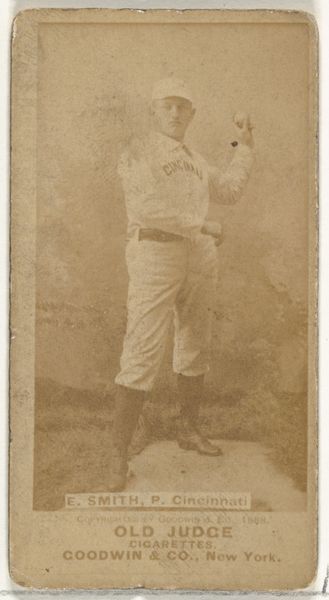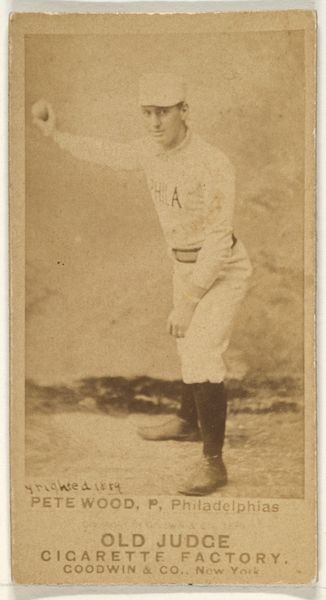
Amos Rusie, Pitcher, Indianapolis, from the Old Judge series (N172) for Old Judge Cigarettes 1889
0:00
0:00
print, photography, albumen-print
#
portrait
# print
#
impressionism
#
baseball
#
photography
#
19th century
#
men
#
athlete
#
albumen-print
Dimensions: sheet: 2 11/16 x 1 3/8 in. (6.9 x 3.5 cm)
Copyright: Public Domain
Editor: So this is "Amos Rusie, Pitcher, Indianapolis," from 1889. It's an albumen print, part of a baseball card series for Old Judge Cigarettes. It has this sort of sepia tone. What's really striking is the formality of the pose; it's almost like a classical portrait. What catches your eye in this image? Curator: You know, what jumps out is the dissonance – the high art aspirations colliding with commercial intentions. Imagine someone, a century from now, trying to understand *us* through our protein bar wrappers, say. It speaks to how meaning is layered, accidental almost. Do you think Rusie felt like he was participating in an artful act? Editor: That's a good question! It's hard to know what he was thinking back then. I’m also fascinated by how posed it is; not what you'd expect from a sporting image today. Curator: Exactly! The stillness suggests an attempt to freeze a moment of idealized strength and grace, an attempt that's both timeless and hopelessly bound to its specific era. The cigarette brand looms like a little dark joke too, doesn’t it? What does the image whisper to you? Editor: It feels like a snapshot of a different time, when baseball was young. More posed, maybe a little naive. Curator: "Naive" is interesting. Or perhaps “earnest”? Early photography often carries this quality - the sheer laboriousness of image-making back then added to the sense of wanting to be believable. What stories could this image tell? Editor: That tension you pointed out—between commerce and art—really does reframe it. It is so much more complex. I like that! Curator: Precisely. Images often hold contradictory realities in tandem. It’s about savoring these delightful ambivalences, isn’t it? It seems that these photos are, unexpectedly, far from just being about baseball, isn’t it?
Comments
No comments
Be the first to comment and join the conversation on the ultimate creative platform.



